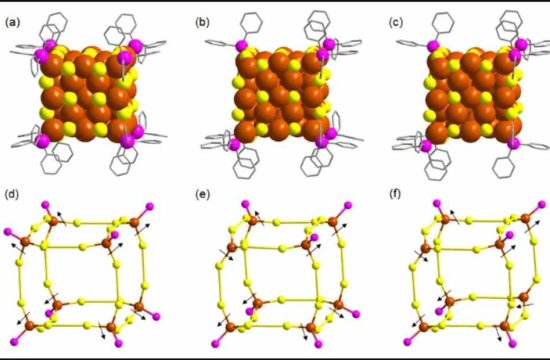
The statistics are sobering: an estimated 350 million people worldwide suffer from one of 7,000 rare diseases. About half of those affected are children, 30 percent of whom will not live to age five. The pharmaceutical industry is under increasing pressure to find ways of treating these diseases since, currently, there is no approved drug treatment for 95 percent of them. But the industry faces its own challenges, including increased development costs due to regulatory requirements and few financial incentives to seek new drug candidates to treat illnesses that affect very small populations.
That’s why drug repurposing makes sense. Until recently, finding new indications for existing drugs was a haphazard, often serendipitous process—an unintended consequence of a drug would emerge, and ultimately lead to a new indication. Arguably the most famous example is the anti-hypertensive sildenafil, which was repurposed for the treatment of erectile dysfunction.
Today, many companies are proactively engaged in drug repurposing as a way to save time and money. Repositioning an approved drug for a different indication also carries less risk than starting from scratch, since the drug already has met pharmacovigilance regulatory requirements and undergone post-market monitoring. Given these advantages, repurposing accounts for approximately 30 percent of the drugs and vaccines recently approved by the U.S. Food and Drug Administration, and the number of repurposing methods has increased dramatically, according to a recent study.
[pullquote]Elsevier recently had the privilege of embarking on a collaboration with Findacure, a UK-based nonprofit organization that drives research to develop treatments for rare diseases.[/pullquote]
Additional forces are driving repurposing, including the availability of huge amounts of data, computational tools that can effectively analyze that data, and an emphasis on precision medicine, which involves targeting therapeutics to specific populations. With the right tools, R&D professionals have the ability to rapidly mine data from the literature, regulatory documents, clinical trial data, electronic health records and other patient-centric information to help identify repurposing candidates.
In parallel, currently available technology enables R&D departments to more rapidly and accurately analyze genomic data—which is immensely vast in and of itself—to identify variants that might predict optimum therapies for subgroups of patients.
What does all this mean for rare diseases? Simply put, identifying a targeted therapeutic for a rare disease can be done with a higher degree of success from a smaller initial candidate set. As a result, companies such as GlaxoSmithKline (GSK) and Novartis now have divisions dedicated to rare diseases. And dozens of companies, mainly biotechs, are now focused exclusively on rare diseases.
That said, companies increasingly are recognizing that collaboration is vital to the success of each stage of drug repositioning. Collaborations with bioinformatics companies provide access to the latest data analysis tools. Collaborations with the academic research community bring innovative thinking, often unconstrained by commercial considerations. Collaborations with patient advocacy groups can facilitate any additional premarket testing that needs to be done on an existing drug and help ensure that it gets to market and into the hands of those who need it.
A Case in Point
Elsevier recently had the privilege of embarking on a collaboration with Findacure, a UK-based nonprofit organization that drives research to develop treatments for rare diseases. Findacure is building cost-of-illness models for 10 rare diseases, quantifying the current cost of each to the UK’s National Health Service (NHS) and demonstrating potential savings through the use of repurposed drugs as treatments. What makes Findacure’s repurposing approach different from many others is its focus on drugs that are off-patent, helping to maximize savings to the NHS.
For each disease, Findacure will do a proof-of-concept study demonstrating that a particular off-patent drug could benefit a particular patient population, that the drug’s mechanism of action is understood and that its use could reduce the cost of healthcare.
The first target is congenital hyperinsulinism (CHI), an extremely rare disease that causes newborns to have a permanently high level of insulin in the blood, which can lead to brain injury or death if not caught quickly. For the most severe cases, the only currently viable treatment is removal of the pancreas, consigning the patient to a lifetime of diabetes.
Findacure identified the generic immunosuppressant sirolimus as an off-label treatment that can help patients regulate their blood sugar. Before the drug can be prescribed routinely for CHI, it must be tested in clinical trials. However, before that can happen, the organization needs a strong body of evidence demonstrating that the drug can and should be progressed to a phase II study.
A presentation by Findacure co-founder Nicolas Sireau, who has two children with a different but equally devastating congenital disorder, convinced Elsevier’s Life Sciences team to help the organization with pro bono informatics expertise and access to the published literature. Specifically to assist with CHI, the company is providing literature on the use of sirolimus as a treatment, including any associated adverse events; a summary of the literature on the increase in insulin sensitivity related to sirolimus use; a structured list of articles about CHI, including reviews, case studies and information on disease subtypes, and leads to researchers working in the area who may be willing to get involved.
The company also is using tools that enable the study and visualization of disease mechanisms, gene expression, proteomics and metabolomics data to assess the natural history of CHI, and shortlist any additional drugs that could be repurposed safely and inexpensively. The goal is to reduce barriers—e.g., licensed access to the literature and data, access to analytics tools and expertise, rights to distribute results of analyses to other collaborators, whether in industry or academia—that Findacure might otherwise encounter. If successful, the approach could be replicated for other rare diseases.
With these kinds of collaborations, built around drug repurposing, everybody wins. Companies fulfill their corporate responsibilities; researchers have opportunities to form networks to facilitate their work on rare diseases; the healthcare system saves money; and most importantly, patients get access to effective and affordable drugs sooner.
Source: dddmag








